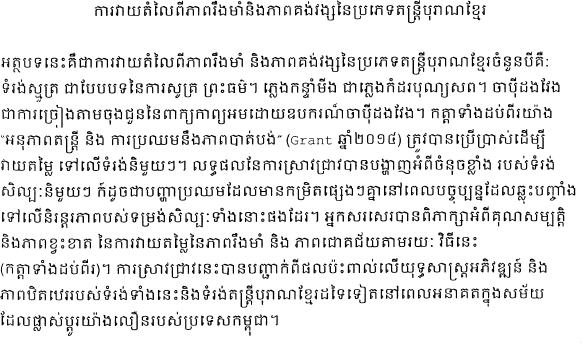Article contents
Gauging Music Vitality and Viability: Three Cases from Cambodia
Published online by Cambridge University Press: 06 December 2018
Extract
Over a decade ago, UNESCO's Convention for the Safeguarding of Intangible Cultural Heritage professed that “the processes of globalization and social transformation” along with “the phenomenon of intolerance” were giving rise to “grave threats of deterioration, disappearance and destruction of the intangible cultural heritage” of the world (2003a). The Convention represented an international acknowledgement of the precarious predicament of many cultural expressions across the world, from languages, music, and dance traditions to worldviews and traditional environmental knowledge. While ethnomusicologists have been engaging for many decades with preservation and protection mechanisms for musical traditions, particularly those of ethnic and minority peoples, the 2003 Convention (and the suite of subsequent UNESCO and UN treaties around culture and heritage) provided further impetus for ethnomusicological engagement in safeguarding and sustainability work. Theoretical and applied research in this area has grown significantly in the last ten to fifteen years on topics ranging from music and tourism (e.g., Connell and Gibson 2005), music as heritage (e.g., Howard 2006), music and cultural rights (e.g., Weintraub and Yung 2009), and music revivals (e.g., Bithell and Hill 2014), to activist or community-oriented approaches to music sustainability (e.g., Pettan and Titon 2015; Schippers and Grant 2016).

- Type
- Articles
- Information
- Copyright
- Copyright © 2016 By The International Council for Traditional Music
References
References Cited
- 5
- Cited by




